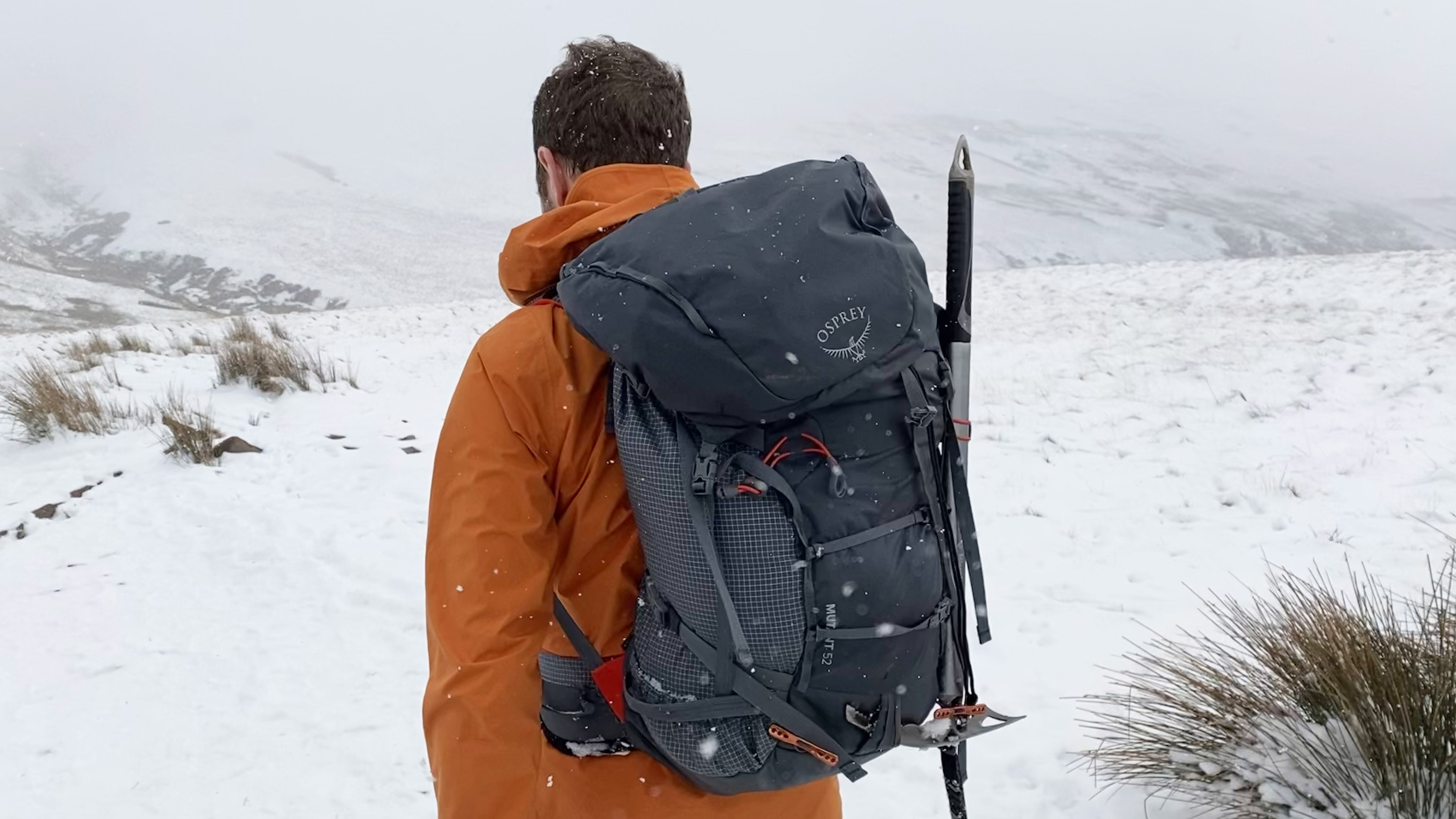Advnture Verdict
Where winter mountaineering and alpine exploits are concerned, the Mutant hits the sweet spot. It’s got enough capacity for all you’ll need – as well as clever storage solutions for the pre-requisite kit – while retaining the lightweight, streamlined and durable qualities of the smaller Mutant packs. Of course, a pack that’s perfect for winter is also great for year-round hiking adventures too.
Pros
- +
Clever storage solutions
- +
Ideal capacity for winter adventures
- +
Tailored to use with gloved hands
- +
Narrow profile aids stability
- +
Customizable gear attachments
Cons
- -
No pockets on hip belt
- -
Gear only accessible through the top
You can trust Advnture
Osprey Mutant 52: first impressions
Developed in collaboration some of the world’s greatest climbers and mountaineers, Osprey’s Mutant 52 is pack designed to meet the demanding needs of alpinists. Blending the long-distance carry capabilities of a mountaineering pack with the fast and light ethos of the Mutant series, it’s a versatile pack that can be used for a range of adventure styles through the year.
Safety, stability and comfort were three of Osprey’s main goals with the Mutant 52 backpack. It has a noticeably slim profile to aid stability and a close-to-body fit. The last thing you want on a tricky downclimb is a wide pack that lurches from side to side with every dynamic move you make.
The Mutant is designed to be compact and feel like a part of you once you’re out in the wild. The main fabric is a robust 210 Denier recycled high tenacity nylon, which is impressively durable, as well as being lightweight.
RRP: $225.00 (US) / £180.00 (UK) / €200.00 (EU)
Volume: S/M 50L / M/L: 52L
Weight: 3lb 5oz / 1.5kg
Dimensions: 76 x 35 x 30cm / 30 x 14 x 12in
Fabric: Bluesign approved 210D recycled high tenacity nylon, PFC/PFAS-free DWR
Compatibility: winter and alpine mountaineering, ice climbing, hut-to-hut trekking and wild camping
The back panel is crafted with snowy conditions in mind. EVA Foam provides the cushioning while the ‘snowshed’ fabric keeps things dry. Another thoughtful touch is a little emergency whistle that’s Integrated into the buckle of the sternum strap, making it almost instantly available in a pinch. Brilliant.
An alpinist's pack has to be versatile enough to accommodate a range of equipment, from technical ice tools and standard winter walking ice axes to ski equipment and climbing rope. The Mutant does this with aplomb and is customisable to the needs of the wearer.
Along the front of the pack are a couple of straps for attaching gear that can be moved around or removed entirely. There are also daisy chain loops for skiers using Voile straps. For the axes, there are a couple of tool locks with bungee tie offs and a durable fabric loop towards the bottom to keep the picks secure.
There are three attachment points towards the top of the pack. These are designed so that climbers can securely haul it up using their ropes at the end of a pitch.
All the latest inspiration, tips and guides to help you plan your next Advnture!
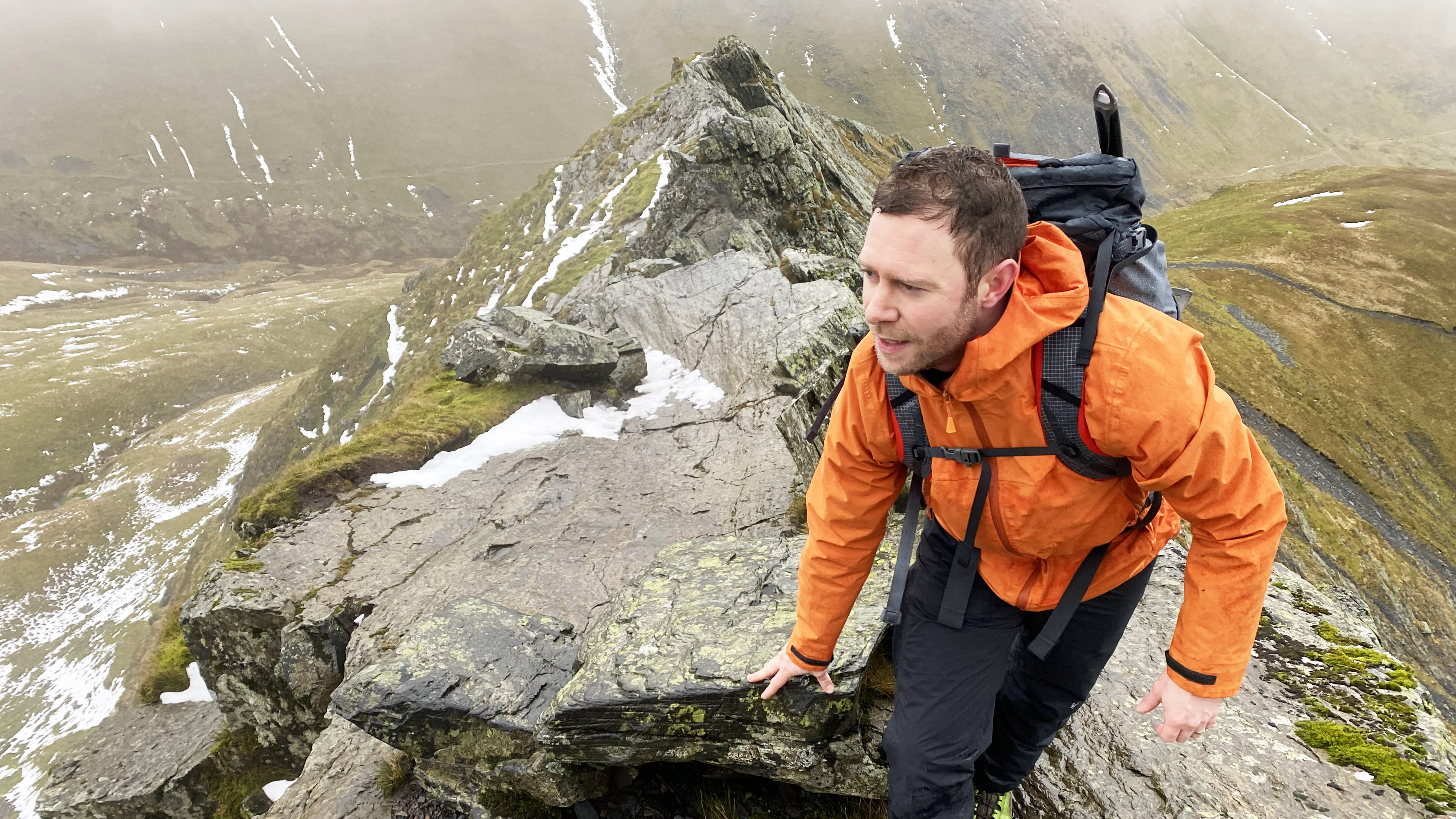
Storage wise, there's a sizeable zippered compartment in the lid and then there's the main compartment, which has a small inner zippered mesh pocket and an elasticated pouch down the back. There are no pockets in the hip belt and the exterior of the pack is reserved for the attachment of technical gear, rather than features like additional pockets.
The 52 is just one of a quartet of Mutant packs. The smaller 22 and 38 are intended for faster, done-in-a-day mountaineering missions. Meanwhile, the larger Nimsdai 90 was designed alongside Osprey ambassador and record-breaking Himalayan mountaineer Nimsdai Purja and is very much a pack for high altitude mountaineering exploits.
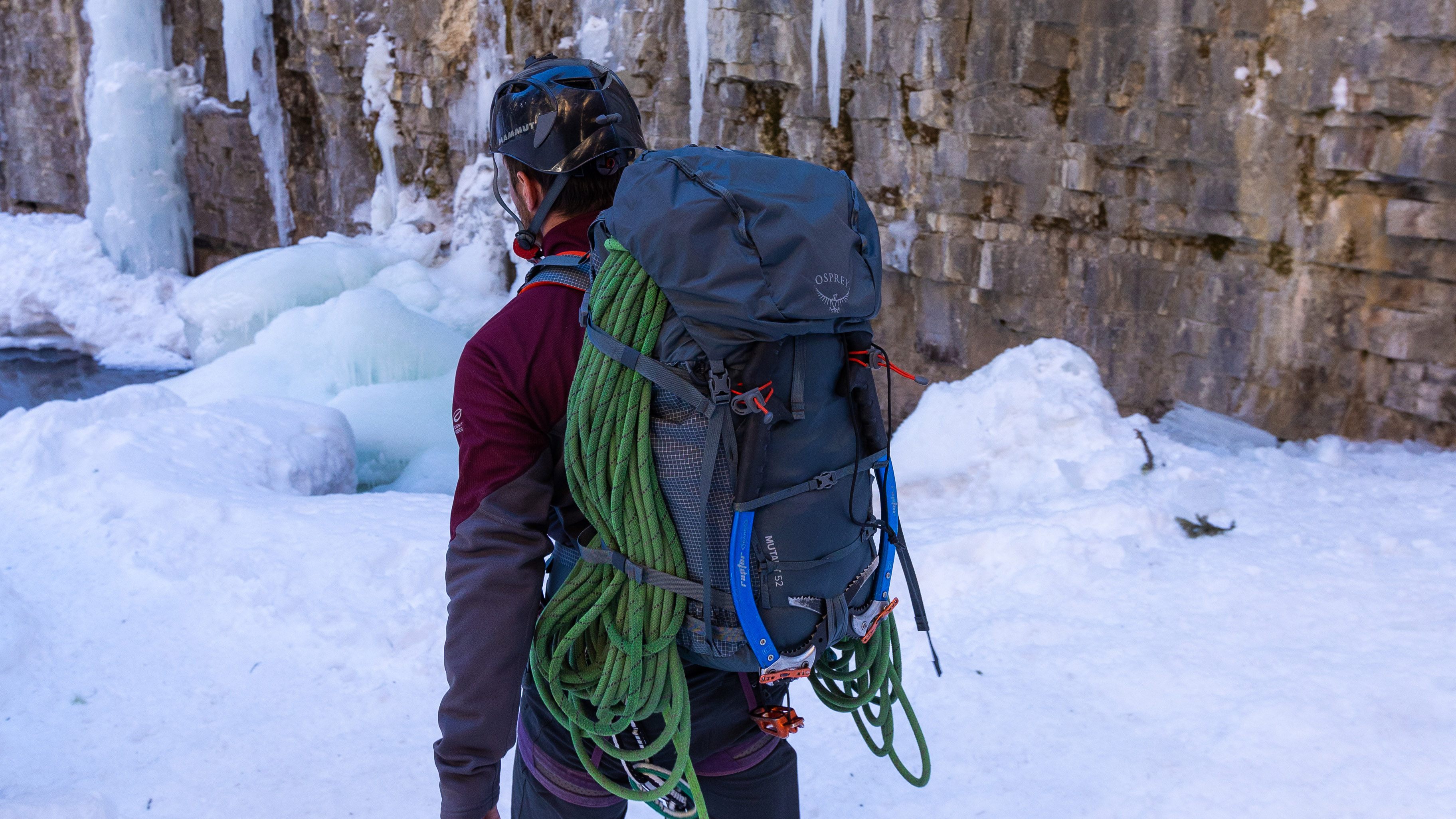
On the trails
Sometimes, it takes a while to get into tune with a new backpack and its quirks. However, I found the Mutant, despite its many clever features, easy to use from the offset. Everything is where it should be and adjusting the pack always felt intuitive.
It’s light for its size, which is half the battle in winter when your kit already weighs much more than in the warmer months. I found wearing it very pleasant both on the trails and on steeper sections. The EVA foam back panel is comfortable, despite being more minimal than what you find on many of Osprey’s packs. The pack also sheds snow very effectively.
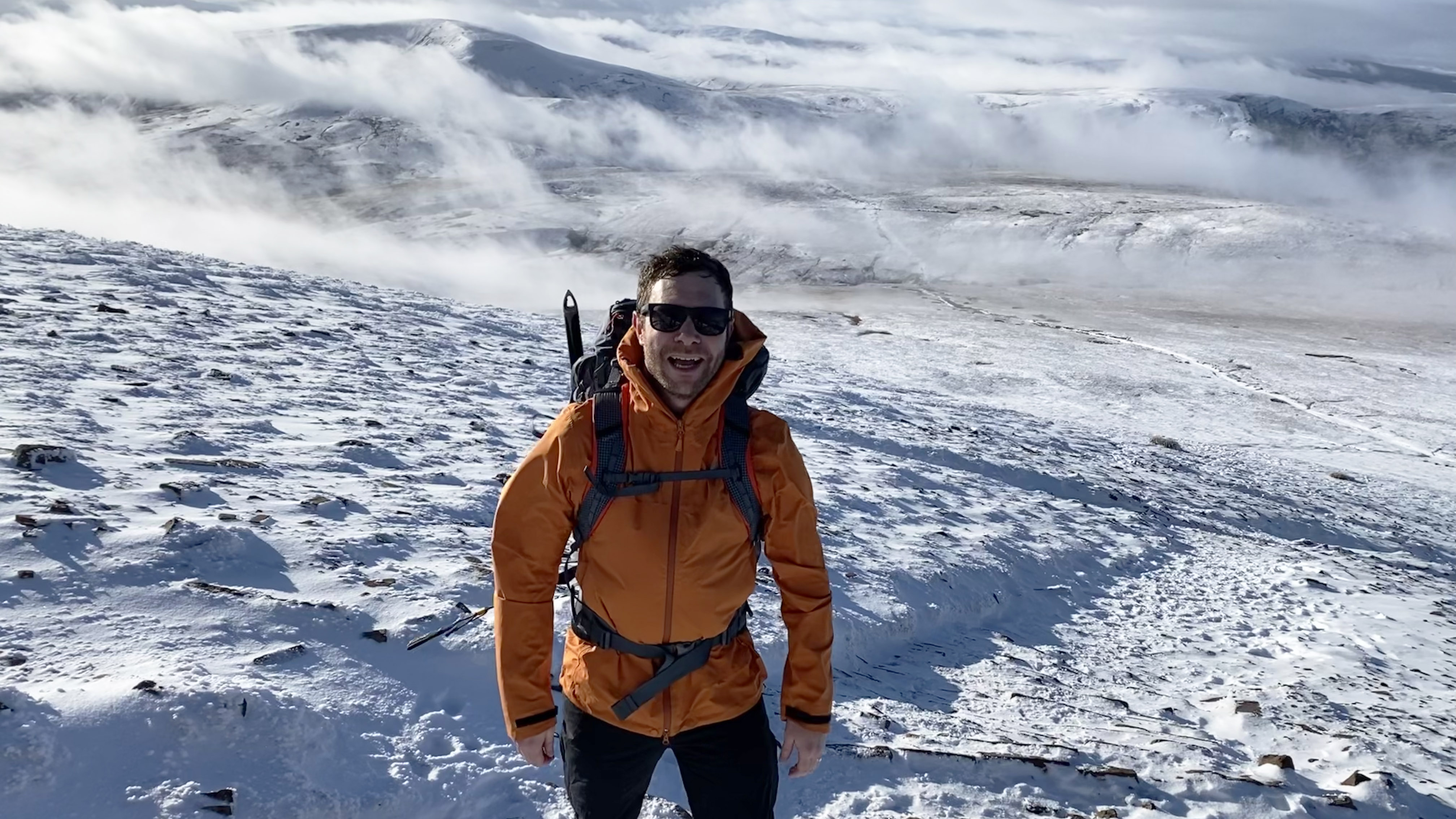
A real test of any backpack is how straightforward it is to use when wearing gloved hands. Osprey have clearly considered this and every zipper, strap and buckle is easy to manipulate.
Capacity wise, it’s really in the Goldilocks zone when it comes to winter and alpine use – not too big, not too small. It’s probably a little too roomy for fair weather day hikes, so I’d opt for a smaller daypack in summer. However, there’s no reason to put your Mutant into a sort of reverse hibernation, as it is well suited as a wild camping pack or for hut-to-hut trekking vacations. This kind of versatility is a real plus.

There are a couple of very minor qualms. There are no little zippered pockets on the hip belt. This may just be a personal thing, but I quite like having at least a tiny bit of storage to hand when on the hill.
Secondly, there’s only one way into the main compartment – through the top. To get to the items at the bottom, you have to either rummage around blindly or start removing items, neither of which is ideal if you’re in the midst of ferocious winter conditions. The items that would typically be at the bottom of a winter pack are the ‘just in case’ items that you don’t really need to hand but would prize in a tough situation. A way of accessing the bottom of the pack would have been useful.
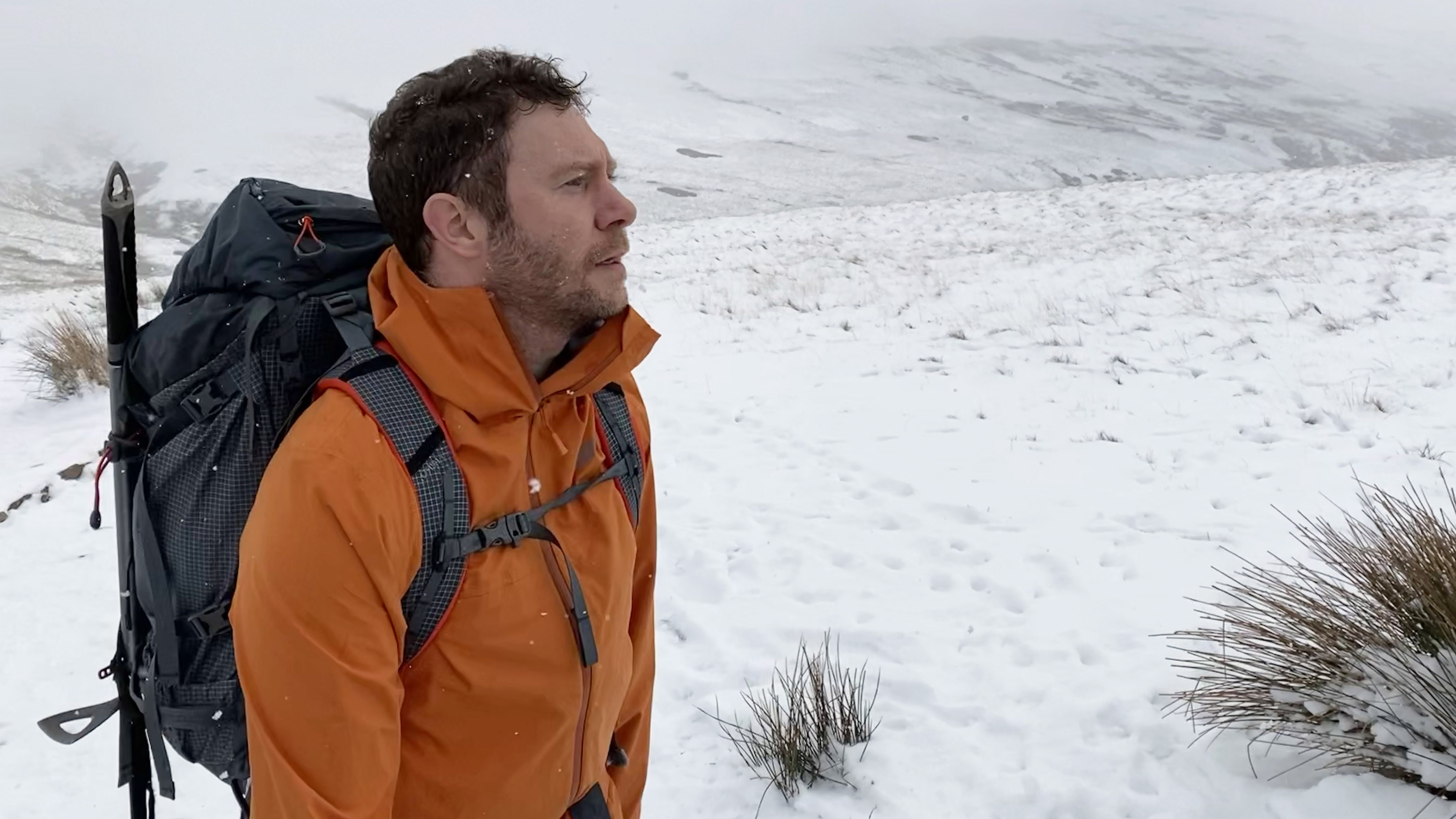
Alex is a freelance adventure writer and mountain leader with an insatiable passion for the mountains. A Cumbrian born and bred, his native English Lake District has a special place in his heart, though he is at least equally happy in North Wales, the Scottish Highlands or the European Alps. Through his hiking, mountaineering, climbing and trail running adventures, Alex aims to inspire others to get outdoors. He's the former President of the London Mountaineering Club, is training to become a winter mountain leader, looking to finally finish bagging all the Wainwright fells of the Lake District and is always keen to head to the 4,000-meter peaks of the Alps. www.alexfoxfield.com
